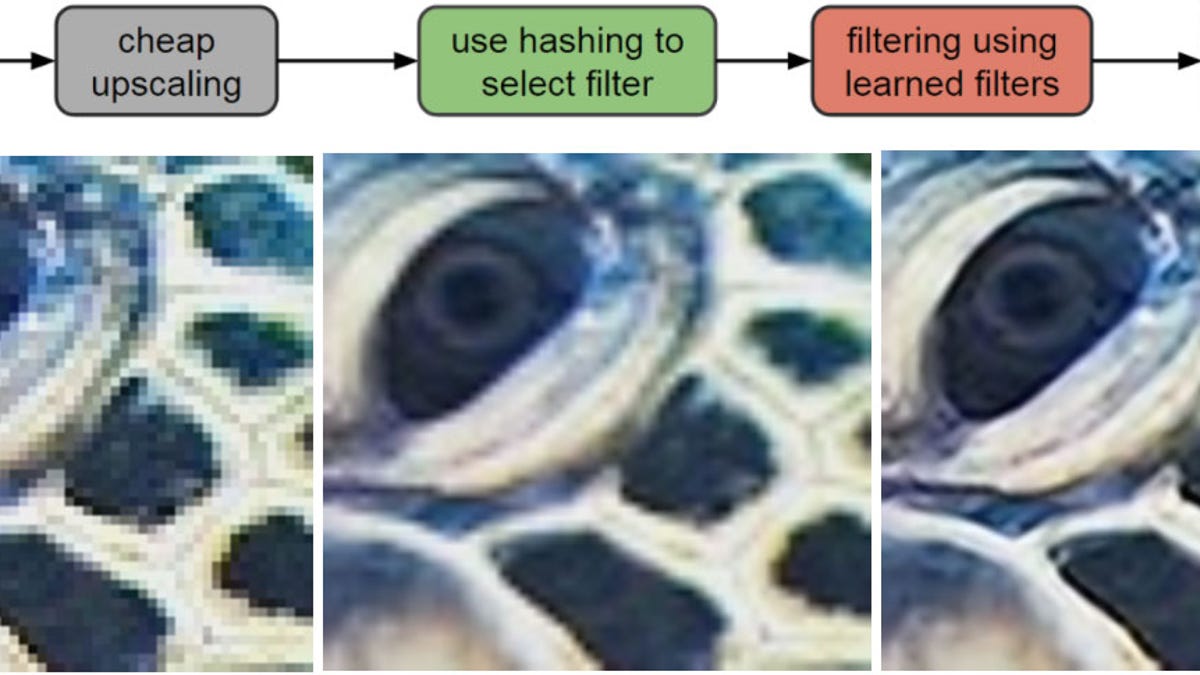Google AI expands your photos to shrink your mobile data usage
The internet giant develops a machine learning method to improve image details and cut Google+ network burden by a third.
It's fun to mock image-processing impossibilities where "Blade Runner" or CSI investigators zoom into photos to see far more detail than a photo could possibly have recorded.
But guess what? Not only does Google have technology that can do something like that kind of photo enhancement, it's also using it to keep you from gobbling through your mobile phone data plan.
It won't help law enforcement see the perp reflected in somebody's retina, but it will make Google+ pictures load faster and reduce network data usage by about a third. With phone data plans being so costly while our appetites for gigabytes are increasing, that's a welcome change.
Google's technology is called RAISR, short for Rapid and Accurate Image Super Resolution. It's a clever use of artificial intelligence that predicts how a particular photo can be magnified based on the actual transformation of countless other photos.
RAISR can expand images without producing jagged, pixelated edges.
With software like Photoshop, you shrink a photo so it has fewer pixels -- a process called downsampling that's useful for showing a big original photo on a small screen. But going the other direction -- upsampling -- just adds more pixels without actually improving the photo. You just can't make up information that wasn't originally there. Google took a different approach than software that just processes a single photo, though.
Specifically, it compared pairs of high-resolution real-world photos with their downsampled low-resolution equivalents. With 10,000 such pairs, its AI software gets a pretty good idea of how a particular detail in the low-resolution image corresponds to what was in the higher-resolution original. Conventional upsampling techniques apply the same mathematical change to the entire image, but Google's approach uses a different magnification approach for each little patch of the photo.
And now it's using the RAISR approach in its Google+ app for some Android phones . Instead of retrieving high-resolution originals over the network, it fetches a version one quarter the size, then expands it with RAISR on the phone to offer more detail.
Overall, using RAISR cuts the app's data usage by about a third, Google product manager John Nack said in a blog post Wednesday. Google is transforming its photo library at the rate of a billion images per week so they can be used with RAISR.
RAISR also can reduce "aliasing" artifacts like those that keep the lines on the left from being smooth.
"In the coming weeks we plan to roll this technology out more broadly," Nack said, but it's not clear where exactly. Offer it to more Google+ users, but the software also could trim data usage for YouTube video thumbnails, Google search results, Google Play Store graphics and other Google properties.
Google detailed RAISR technology in a research paper in 2016. And though it's not the only organization working on smarter upsampling technology, RAISR is 10 to 100 times faster than alternatives, "allowing it to be run on a typical mobile device in real-time," RAISR researcher Peyman Milanfar said in a blog post about the technology.
Batteries Not Included: The CNET team shares experiences that remind us why tech stuff is cool. Take a look here.
CNET Magazine: Check out a sampling of the stories you'll find in CNET's newsstand edition, right here.


